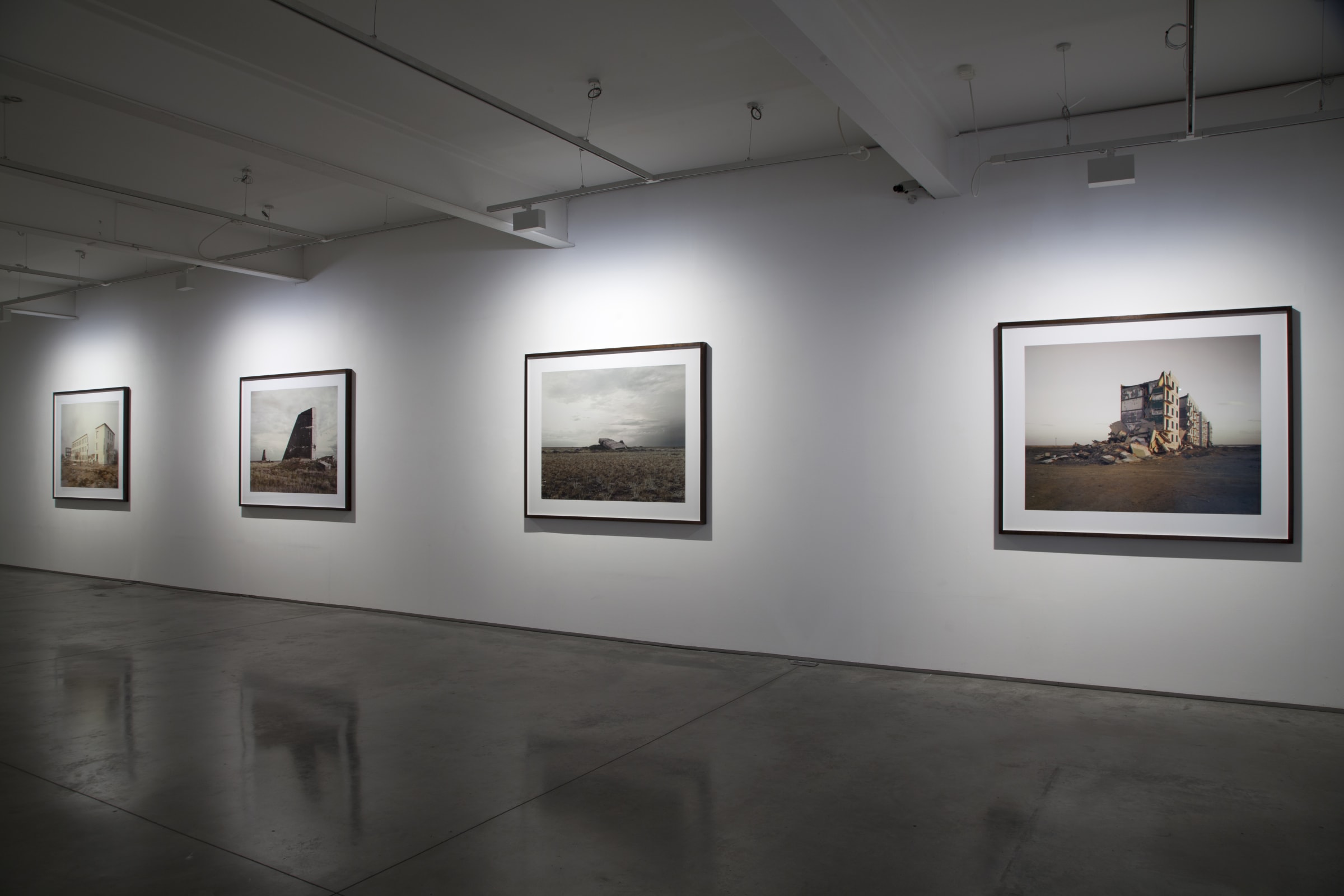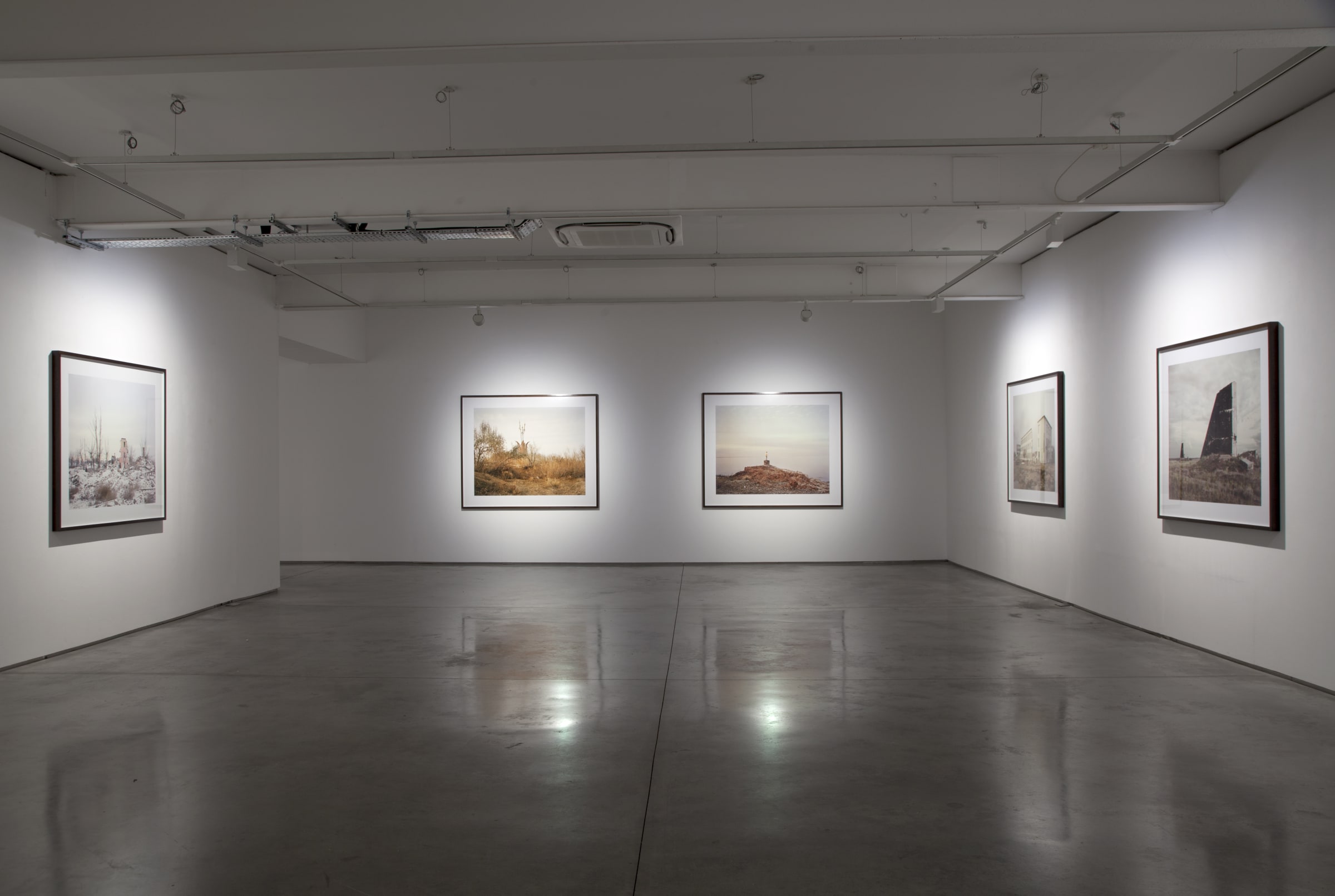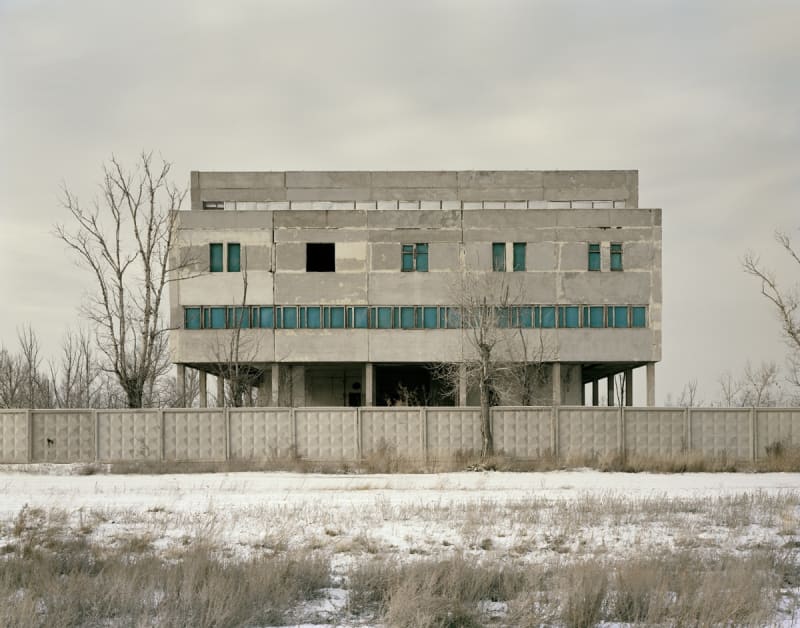Overview
Rooted in an interest in the 'aesthetics of destruction,' Nadav Kander's most recent project Dust explores the vestiges of the Cold War through the radioactive ruins of secret cities on the border between Kazakhstan and Russia.
Rooted in an interest in the 'aesthetics of destruction,' Nadav Kander's most recent project Dust explores the vestiges of the Cold War through the radioactive ruins of secret cities on the border between Kazakhstan and Russia.
Priozersk (formally known as 'Moscow 10') and Kurchatov are closed cities, restricted military zones, concealed and not shown on maps until they were 'discovered' by Google Earth. Enlisted to the pursuits of science and war, the sites were utilized for the covert testing of atomic and long distance weapons. Falsely claimed as uninhabited, the cities, along with nearby testing site 'The Polygon' set the stage for one of the most cynical experiments ever undertaken. Scientists watched and silently documented the horrifying effects of radiation and pollution on the local population and livestock.
Fascinated by the area's past and driven by discovery, Kander's photographs portray stark fact and bleak setting with a characteristic poeticism. Secrets seem to seep from the silence of the crumbling monuments, bowing under heavy grey skies. Describing what he saw as 'empty landscapes of invisible dangers' Kander's images evoke his sense of awe and fear as he responded to these places and to the weight of their history.
Rooted in an interest in the 'aesthetics of destruction,' Nadav Kander's most recent project Dust explores the vestiges of the Cold War through the radioactive ruins of secret cities on the border between Kazakhstan and Russia.
Works















